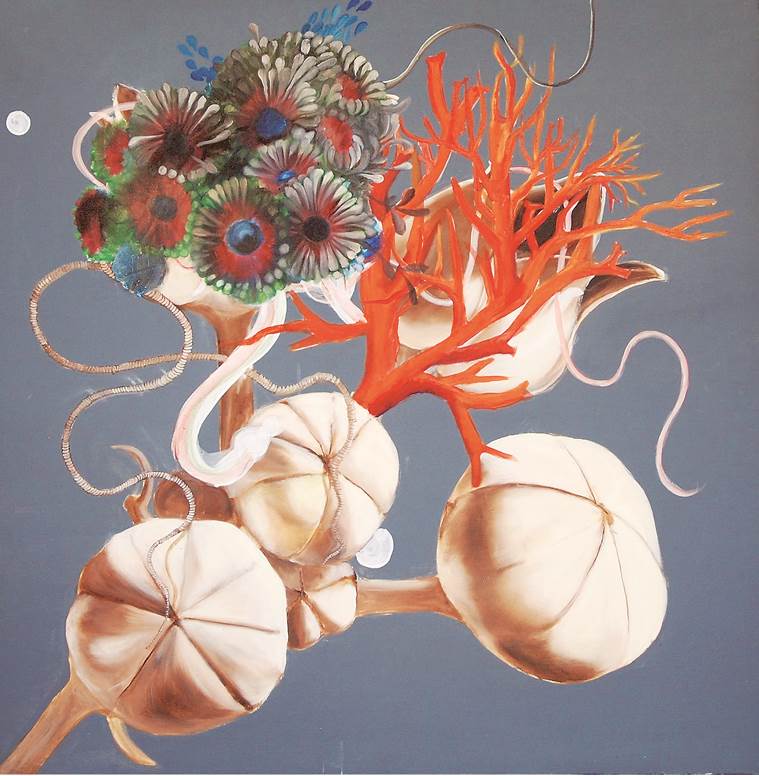Order in Chaos
Bangalore-based artist Rajita Schade explores disorder and chaos in modern day society through her abstract works
 Rajita Schade’s work titled Love, It’s Complicated.
Rajita Schade’s work titled Love, It’s Complicated.
Bangalore-based Rajita Schade’s abstract painting titled The Matrix, where green vertical lines are spread across a black background, brings back instant memories of The Wachowskis’ science fiction The Matrix (1999). An amalgamation of orange, pink and brown colours ornate the otherwise dark space. “My works explore urban scape and the reality and virtual worlds we inhabit. Friendship these days is mostly virtual and many tasks are carried out on computers. Various skyscrapers of Gurgaon look exactly like the matrix, where people spend their lives inside small flats. Although the houses appear like boxes, there is life unfolding inside,” says Schade, 44.
For The Matrix, Schade was inspired by her practice of looking into surrounding homes with the help of binoculars. She saw who was doing what: children sitting silently on their laptops, grandchildren having dinner with their grandparents and people arguing. Schade’s recent solo show “Order Disorder” comprising 14 works delves into what she thinks is disorientation and disorder in the current urban environment. “The exhibition is a reflection of an inner life in this outer disorientation where everything is upside down and where we are navigating space through disorder,” she says.
In the canvas titled Love, It’s Complicated, black clouds envelop a landscape replete with strong flashes of red paint. Blue highway-like strokes, yellow spots and smudged purple and pink colours, all come together to elucidate trials and tribulations of love. “It commands your attention and wants to draw the viewer in like love does. It is violent in places, almost like a wild force. There are times, it appears soothing, complex, looks crazy and complicated, but that is how it is,” says Schade, who studied applied arts at M.S. University in Baroda. She had also created art for a Safdar Hashmi show for Tihar jail inmates in the past.
 Rajita Schade’s work titled Amphibian
Rajita Schade’s work titled Amphibian
Another work titled The Beginning is a colourful reflection of Schade’s artistic journey as she ventured into abstract art a year ago, mostly after working with plant portraits for over a decade. Replete with elements from nature, such as tentacles, plant leaves and stems, the work meditates on how nature came about in an unsettling environment. “Moving from figurative to abstract was unsettling for me too. This is a depiction of looking at paintings in a new way,” she says.
Schade, who’s been inspired by artist Bharti Kher and German artist Katharina Grosse, says, that abstraction is an empty space in case of Indian art. “Abstraction is quite difficult. It would be better if Indian audiences began to understand it. In figurative art, one can easily spot a pot or a lady. It is human tendency to feel happy when you see something familiar. But in abstract art, you need to look a little deeper and that’s the rewarding bit,” says Schade.



- 01
- 02
- 03
- 04
- 05
























